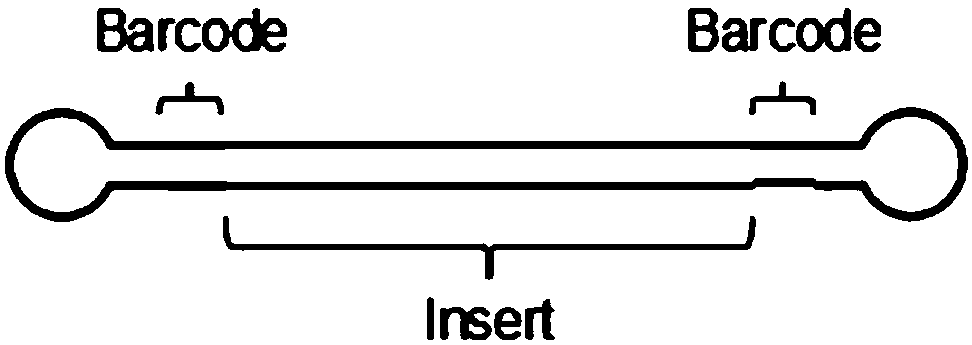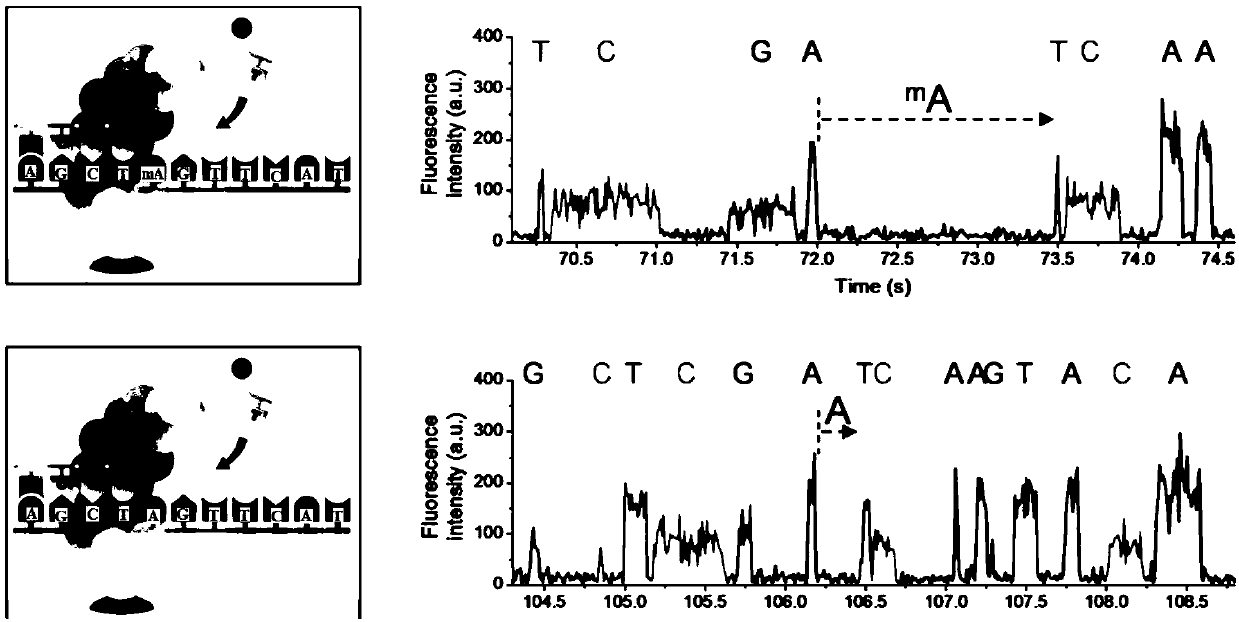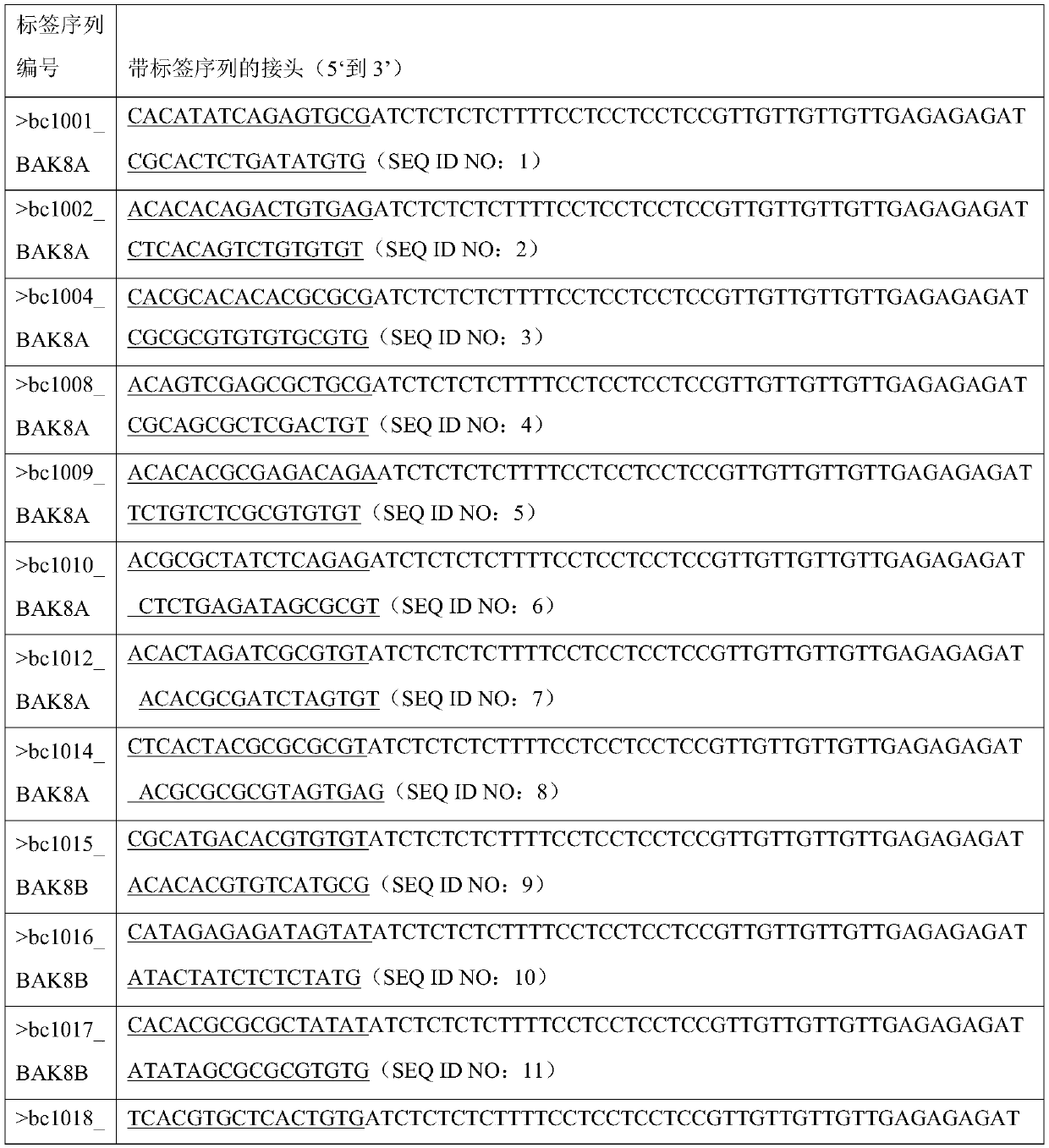Barcode, linker sequence and kit for third-generation sequencing, and library construction method for third-generation sequencing
A technology of tag sequence and linker sequence, which is applied in the field of tag sequence for third-generation sequencing, can solve the problems of data waste, data cannot be split into each sub-library, increase the cost of sequencing, etc., and achieve the effect of improving the split rate
- Summary
- Abstract
- Description
- Claims
- Application Information
AI Technical Summary
Problems solved by technology
Method used
Image
Examples
Embodiment 1
[0069] Commercial library kit used: 100-991-900#SMRTbell TM Template Prep Kit1.0Reagent quantities support 10library preparations. SMRTbell. Template Prep Kit (500bp-20Kb) brand @PACIFIC BIOSCIENCES / C / Specification & 10 reactions / box ((PACIFIC BIOSCIENCES, lot:0101995217)). Purification magnetic beads: Novizym VAHTSTM DNA Clean Beads (lot: N411).
[0070] The experimental steps are as follows:
[0071] (1) Synthesize a linker with a methylation-modified tag sequence. The linker sequence is shown in Table 1. The difference from the comparative example is that the A base in the tag sequence (underlined part) is a 6mA modified base; and according to Table 2 The annealing system and annealing reaction conditions shown complete the annealing of the joint.
[0072] (2) Use Covaris g-tube to fragment genomic DNA, purify the sample with 0.6 times Novizym magnetic beads, and then detect the concentration and fragment distribution.
[0073] (3) Enzyme 7 was used to digest the fragment...
PUM
 Login to View More
Login to View More Abstract
Description
Claims
Application Information
 Login to View More
Login to View More - R&D
- Intellectual Property
- Life Sciences
- Materials
- Tech Scout
- Unparalleled Data Quality
- Higher Quality Content
- 60% Fewer Hallucinations
Browse by: Latest US Patents, China's latest patents, Technical Efficacy Thesaurus, Application Domain, Technology Topic, Popular Technical Reports.
© 2025 PatSnap. All rights reserved.Legal|Privacy policy|Modern Slavery Act Transparency Statement|Sitemap|About US| Contact US: help@patsnap.com



